Key Takeaways
-
Nest Construction: Wasps build nests using chewed wood fibers and saliva, forming a papery material.
-
Structured Design: Nests contain hexagonal cells and layers that offer insulation and protection.
-
Rapid Growth: Started by a queen, nests grow fast and can hold thousands of wasps by late summer.
-
Danger to Humans: Wasps defend their nests aggressively, causing painful stings and allergic risks.
-
Safe Removal: Always hire pest professionals for secure wasp nest removal.
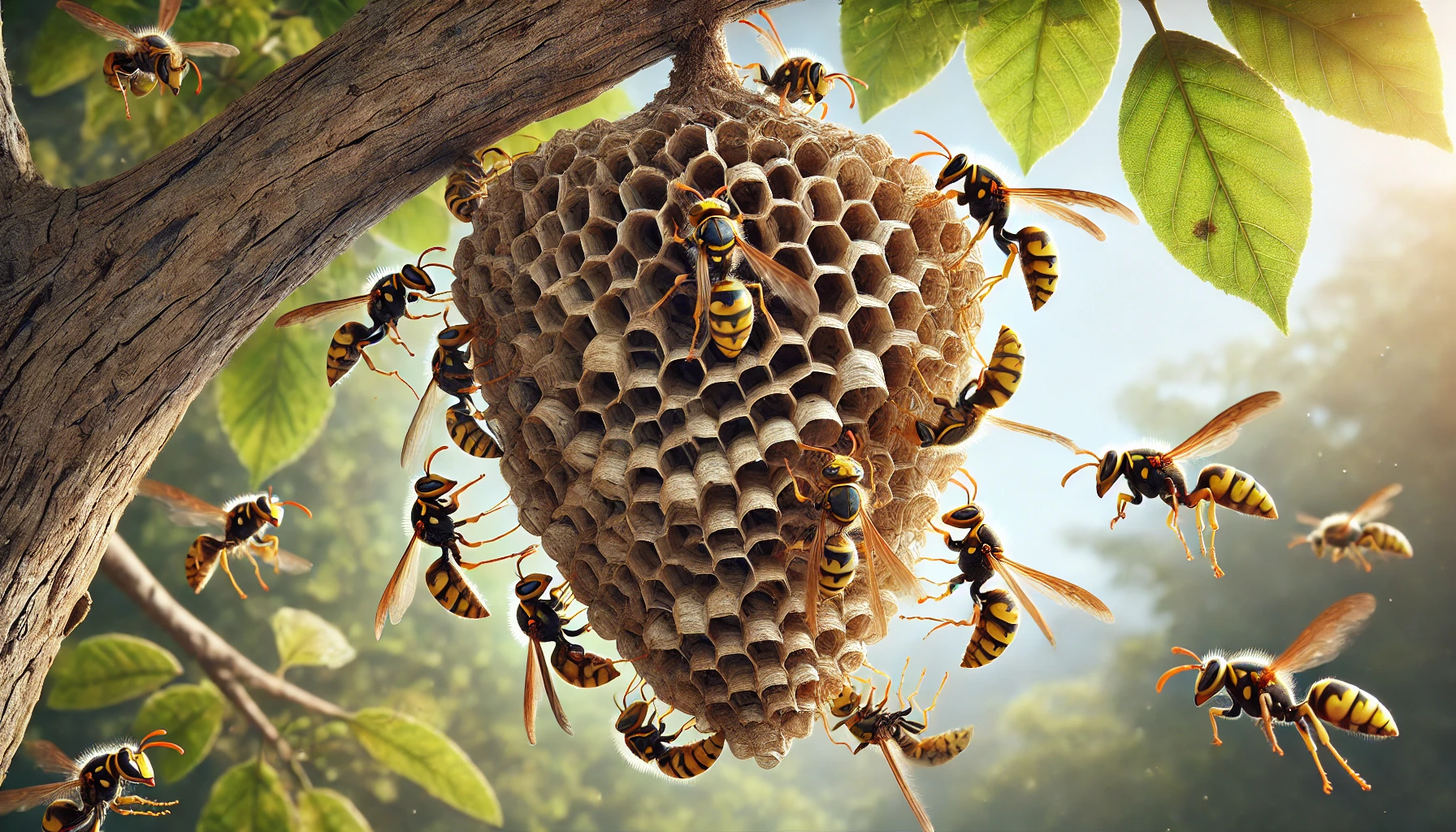 Wasps are fascinating creatures known for their impressive ability to build intricate nests. These structures provide a safe environment for their colonies to thrive and protect their young. But how exactly do wasps manage to construct such detailed nests? In this article, we’ll explore the process of wasp nest building, what materials they use, and how their natural instincts guide them in creating these homes.
Let’s explore the fascinating world of wasp nests, the materials these tiny architects use, where they love to build, and what US homeowners like you should remember.
Wasps are fascinating creatures known for their impressive ability to build intricate nests. These structures provide a safe environment for their colonies to thrive and protect their young. But how exactly do wasps manage to construct such detailed nests? In this article, we’ll explore the process of wasp nest building, what materials they use, and how their natural instincts guide them in creating these homes.
Let’s explore the fascinating world of wasp nests, the materials these tiny architects use, where they love to build, and what US homeowners like you should remember.
Why and Where Do Wasps Build Nests, Anyway?
- Wasps don’t build nests just for fun—they have serious reasons! Nests provide a safe, secure place for laying eggs and raising their young, protecting their colonies from predators and harsh weather. You know what? Different wasp species have unique preferences when it comes to their nesting spots:
-
Paper Wasps: Have you ever seen those upside-down umbrella-shaped combs under your porch? Those are classic paper wasp homes tucked under eaves or window frames.
-
Yellowjackets: These guys prefer a bit more secrecy. They build nests underground, inside wall voids, or hidden in attic spaces—talk about being secret!
-
Hornets: Hornets choose lofty locations, building big, enclosed nests high up in trees or shrubs, away from the hustle and bustle of everyday life.
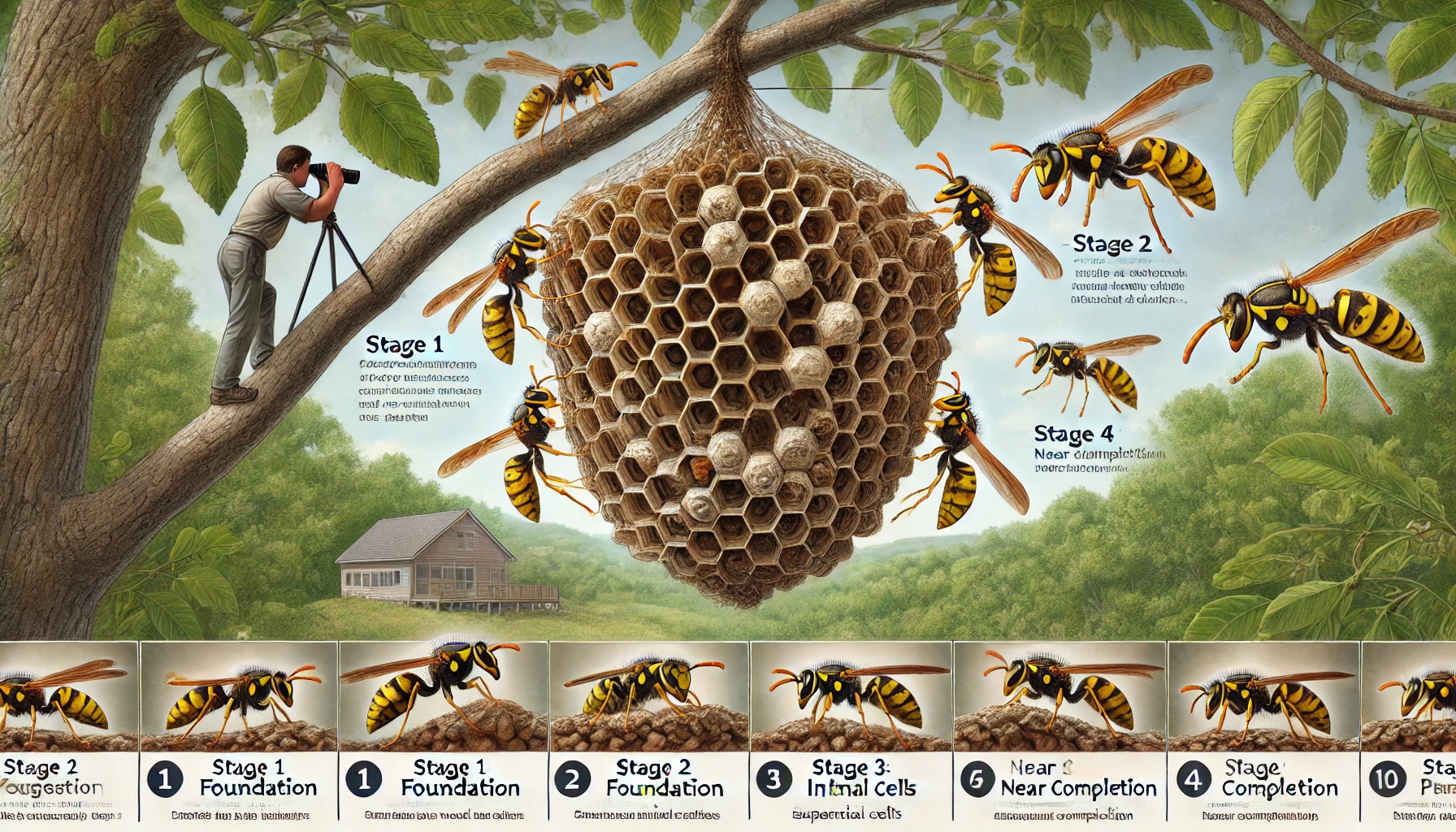

Not getting a solution?
Get your free pest control estimate today!What Exactly Are Wasp Nests Made Of?
- You might be surprised that wasps create these structures using basic stuff: mainly wood fibers and their saliva. Simple, right? Here’s how it goes:
-
Wood Fibers: Wasps scrape bits of wood from weathered surfaces like fences, decks, tree bark, and even cardboard boxes. They chew this up until it becomes a soft, papery pulp.
-
Saliva: Wasp saliva is their secret ingredient. It acts like glue, hardening with the wood pulp to form durable, weather-resistant walls.
-
Mud: Some solitary wasps, like mud daubers, build their nests from mud. These nests resemble small mud tubes or clay pots stuck to walls or ceilings.
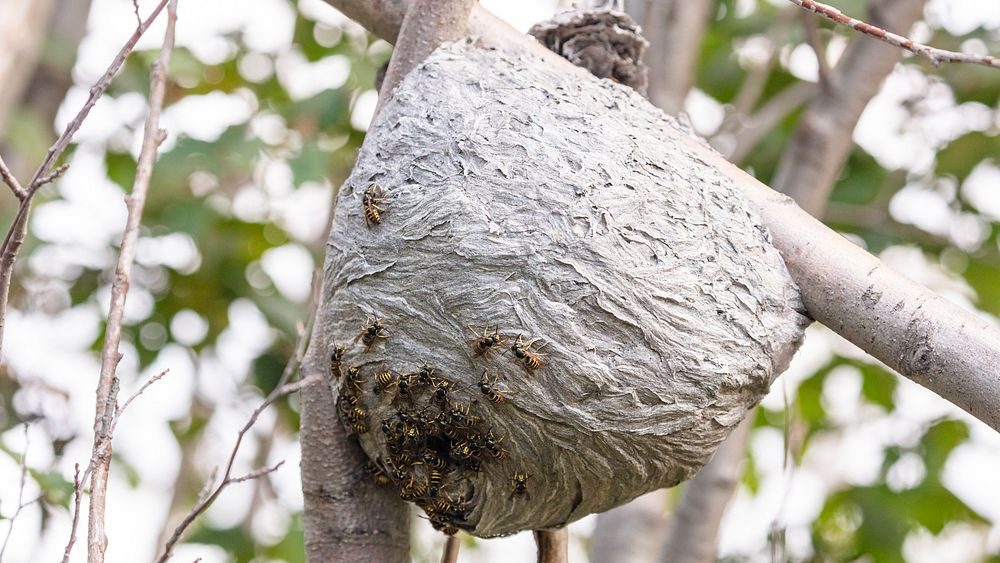 The wasp’s ability to turn wood into a pulp-like material is key to their nest-building success. Unlike bees that use wax to build their hives, wasps rely on this paper-like material, which gives their nests a distinctive appearance.
The wasp’s ability to turn wood into a pulp-like material is key to their nest-building success. Unlike bees that use wax to build their hives, wasps rely on this paper-like material, which gives their nests a distinctive appearance.
How Do Wasps Build Their Nests? Let’s Break It Down.
The nest-building process begins when a queen wasp selects a suitable location. Depending on the species, this could be in a tree, under the eaves of a house, or even underground. Once she has chosen a location, the queen starts the construction by creating a small stem known as a petiole. This stem acts as the foundation for the rest of the nest. Next, the queen forms the first cells, which are small hexagonal chambers where eggs will be laid. Over time, worker wasps join in to expand the nest. They continue to gather wood fibres, chew them into a paste, and add layers to the structure. These layers form a series of overlapping combs, each serving a specific function for the colony.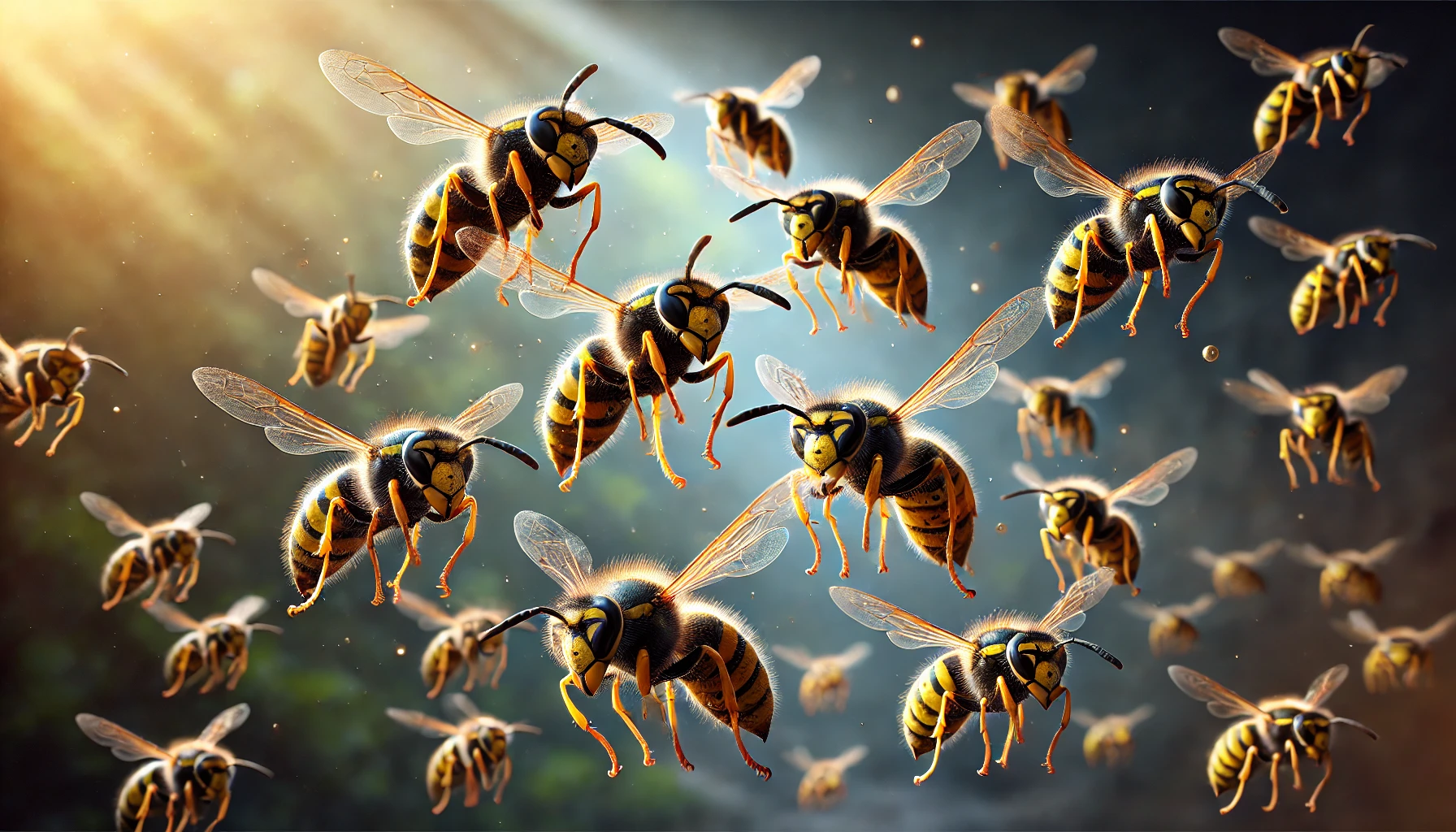 Step 1: The Queen Starts the Show
Every spring, a queen wasp wakes up from her winter nap. She searches for the perfect spot, builds a tiny stalk called a petiole to secure her nest, and constructs a few hexagonal cells from the papery pulp she makes. Then she lays eggs, feeding and protecting her larvae until her first group of workers is ready to help.
Step 2: Workers Step In
Once workers hatch, things take off. These worker wasps tirelessly gather materials, chew wood fibers into pulp, and add cell after cell. The nest grows rapidly with all hands—or rather, mandibles—on deck. Depending on the species, nests can either remain open or become enclosed like a football-shaped fortress.
Step 3: Summer Frenzy
By late summer, nests can become extraordinary large. The colony buzzes (literally) with routine activities, workers caring for larvae, going for food sources, and try to protecting their developing home. You might notice a significant increase in wasp traffic now—that’s their peak season.
Step 4: Winding Down in the Fall
As temperatures decline, wasps slow down too. Queens produce new wasps who breed to find cosy winter shelters. The nest gets abandoned as winter settles in, becoming empty and inactive. And nope, wasps don’t reuse old nests. Once it is abandoned, they’re accomplished for good.
Step 1: The Queen Starts the Show
Every spring, a queen wasp wakes up from her winter nap. She searches for the perfect spot, builds a tiny stalk called a petiole to secure her nest, and constructs a few hexagonal cells from the papery pulp she makes. Then she lays eggs, feeding and protecting her larvae until her first group of workers is ready to help.
Step 2: Workers Step In
Once workers hatch, things take off. These worker wasps tirelessly gather materials, chew wood fibers into pulp, and add cell after cell. The nest grows rapidly with all hands—or rather, mandibles—on deck. Depending on the species, nests can either remain open or become enclosed like a football-shaped fortress.
Step 3: Summer Frenzy
By late summer, nests can become extraordinary large. The colony buzzes (literally) with routine activities, workers caring for larvae, going for food sources, and try to protecting their developing home. You might notice a significant increase in wasp traffic now—that’s their peak season.
Step 4: Winding Down in the Fall
As temperatures decline, wasps slow down too. Queens produce new wasps who breed to find cosy winter shelters. The nest gets abandoned as winter settles in, becoming empty and inactive. And nope, wasps don’t reuse old nests. Once it is abandoned, they’re accomplished for good.
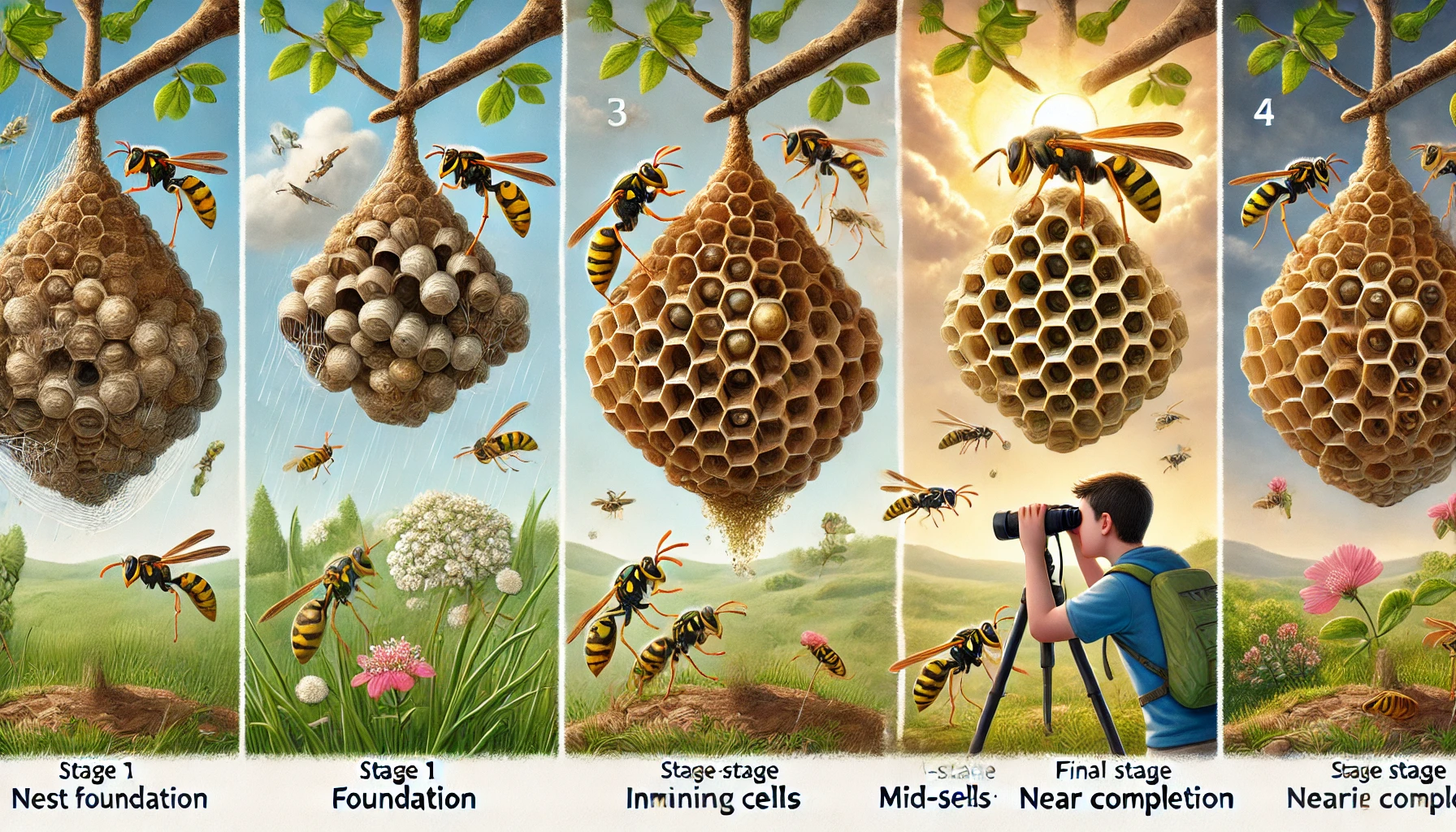
What Types of Wasp Nests Might You Encounter?
Identifying a nest can help you understand the kind of wasp you’re dealing with:| Wasp Type | Nest Appearance | Typical Locations |
|---|---|---|
| Paper Wasps | Open, umbrella-shaped comb | Eaves, porch ceilings, windows |
| Yellowjackets | Hidden or enclosed nests, often football-shaped | Underground, walls, attics |
| Hornets | Large, enclosed nests | High trees, bushes, roof overhangs |
| Mud Daubers | Small mud tubes or pots | Walls, garages, sheds |
Safety Tips if you live around Active Wasp Nest
Wondering if a nest is active? Watch from a distance. Busy nests have constant wasp traffic. Quiet nests might already be abandoned, especially in late autumn or winter.Safety Guidelines
- Approach nests at night—wasps are way less active then.
- Always, always wear protective gear if you’re getting close.
- Be careful around hornets and yellowjackets; these guys can be pretty aggressive.
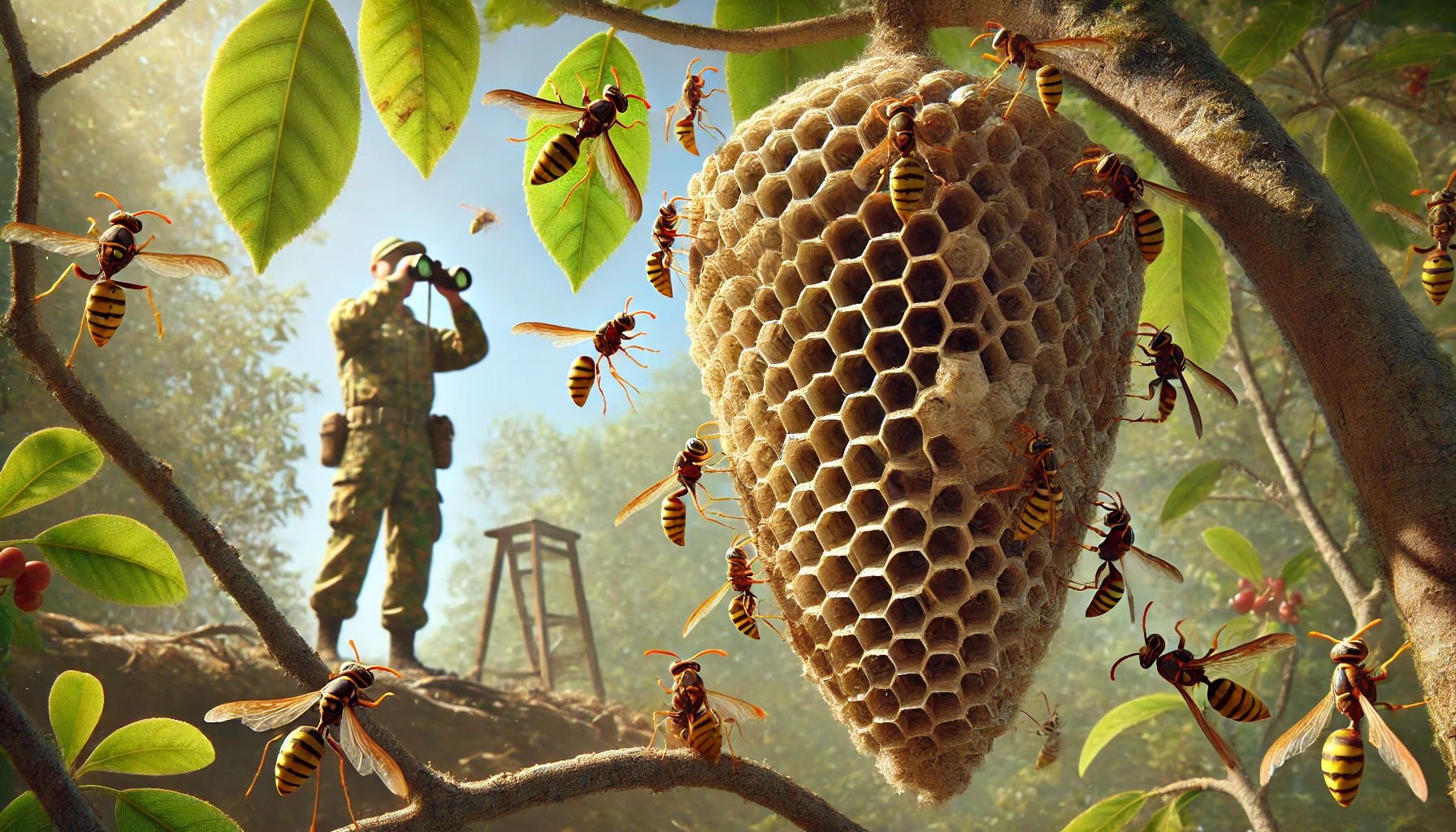 When Should You Remove a Nest?
It’s wise to get rid of nests if they’re:
When Should You Remove a Nest?
It’s wise to get rid of nests if they’re:
- Near entryways, patios, children’s play areas, or heavily trafficked spots.
- Home to aggressive wasps that threaten you or your pets.
Do You Need Professional Help?
You can handle smaller nests with a store-bought spray—but honestly, more enormous nests or those hidden in tricky spots are better left to the pros. Pest control experts company come provided with special gear and have the know-how to handle disposal safely and effectively, preventing those nasty surprise stings.With a bit of understanding, you can safely coexist with these fascinating insects—or know exactly when it’s time to call in the experts. Because, let’s face it, nobody enjoys surprise wasp encounters!
 If you feel things have gone out of control, it is advised to contact pest control professionals. Our team can provide a customized approach to protect your home effectively.
If you feel things have gone out of control, it is advised to contact pest control professionals. Our team can provide a customized approach to protect your home effectively.
Visit our Species, Control, and DIY Guide sections for additional resources on wasps and ways to tackle a wasp infestation.





